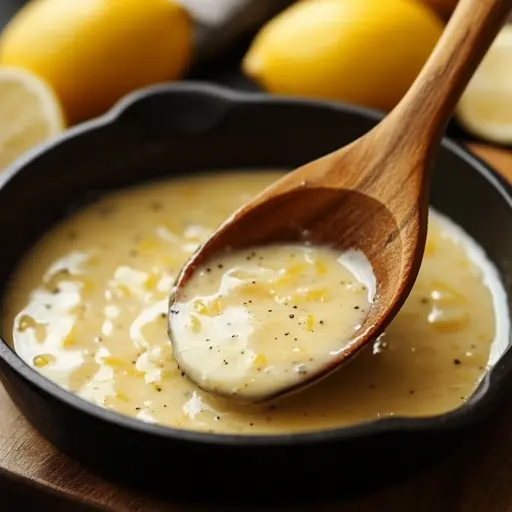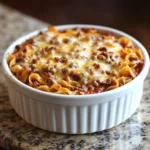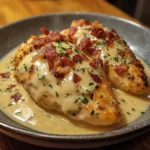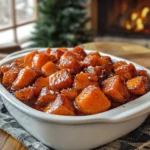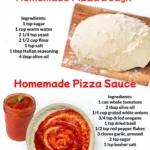Description:
This Creamy Lemon Butter Sauce is a versatile and elegant condiment that will elevate any dish from simple to sublime. Tangy lemon juice dances with rich butter and the subtle notes of white wine and garlic, creating a harmonious blend that’s both decadent and refreshing. Perfect for drizzling over pasta, seafood, vegetables, or grilled chicken, this sauce is incredibly easy to make and guaranteed to impress. It’s a culinary secret weapon you’ll want to keep in your repertoire.
Ingredients:
- 1 cup dry white wine (such as Sauvignon Blanc, Pinot Grigio, or Chardonnay)
- 1 large garlic clove, smashed (skin on or off, your preference)
- 1 cup heavy cream (36-40% milk fat)
- 2 tablespoons fresh lemon juice (from approximately 1 medium lemon)
- 4 tablespoons (1/2 stick) unsalted butter, very cold, cut into small cubes
- Salt, to taste (start with 1/4 teaspoon)
- Freshly ground black pepper, to taste (start with a pinch)
Preparation:
Step 1: Aromatic Infusion: Wine and Garlic Reduction
In a medium-sized, heavy-bottomed saucepan, pour in the dry white wine. Add the smashed garlic clove. The act of smashing the garlic releases its aromatic oils without overpowering the sauce with a pungent garlic flavor. Place the saucepan over medium heat and bring the wine to a gentle simmer. Allow the wine to reduce by half, which usually takes about 5-7 minutes. You’ll notice the liquid decreasing in volume, and the aroma will become more concentrated. This reduction process intensifies the wine’s flavor, creating a deeper, richer base for the sauce. Keep a close eye on it to prevent burning. If the wine starts to boil rapidly, reduce the heat immediately.
Step 2: Creamy Embrace: Incorporating the Cream
Once the wine has reduced by half, lower the heat to low or medium-low. This is crucial to prevent the cream from scorching or curdling. Slowly pour in the heavy cream, stirring constantly with a whisk or wooden spoon. The cream will immediately begin to blend with the reduced wine, creating a light, ivory-colored mixture. Continue to simmer gently, stirring occasionally, until the sauce begins to thicken slightly. This process can take anywhere from 5 to 10 minutes. You’re looking for the sauce to coat the back of a spoon. Be patient, as the gentle simmering allows the cream to meld with the wine and develop a velvety texture.
Step 3: Zesty Awakening: Infusing with Lemon Juice
Remove the saucepan from the heat temporarily. This step is crucial because adding lemon juice to high heat can cause the cream to curdle. Add the fresh lemon juice to the saucepan, stirring gently but thoroughly to combine. The lemon juice will brighten the sauce, adding a tangy zest that balances the richness of the cream and butter. Taste the sauce at this point. If you prefer a more pronounced lemon flavor, add a little more lemon juice, a teaspoon at a time, until you reach your desired level of tartness.
Step 4: Silken Finish: The Butter Emulsion
This is the most critical step in achieving a silky-smooth, emulsified sauce. Remove the garlic clove before doing this. Ensure the saucepan is completely removed from the heat. Gradually whisk in the cold butter, one tablespoon at a time. Whisk vigorously after each addition until the butter is fully incorporated and the sauce becomes glossy and smooth. The cold butter helps to emulsify the sauce, creating a stable mixture that won’t separate. Working off the heat prevents the butter from melting too quickly and breaking the emulsion. If you find the sauce is separating, you can try adding a tiny splash of cold water and whisking vigorously to bring it back together.
Step 5: Final Touches: Seasoning and Serving
Season the sauce with salt and freshly ground black pepper to taste. Remember that salt enhances the flavors, while pepper adds a subtle warmth and complexity. Start with small amounts of each and adjust to your preference. Taste the sauce one last time to ensure it’s perfectly seasoned. Serve the sauce immediately over your desired dish. If you’re not serving it immediately, keep it warm in a double boiler or a very low oven to prevent it from separating. However, it’s always best when freshly made.
Why You Will Love This Recipe:
This Lemon Butter Sauce is a game-changer because it’s:
- Incredibly Versatile: It complements a wide range of dishes, from pasta and seafood to vegetables and grilled meats.
- Quick and Easy: It requires minimal ingredients and comes together in under 20 minutes.
- Impressive and Elegant: It adds a touch of sophistication to any meal.
- Customizable: You can easily adjust the lemon juice and seasonings to suit your taste.
- A Flavor Explosion: The combination of tangy lemon, rich butter, and savory wine creates a truly unforgettable taste experience.
COOKING Rating: Easy
Serving Suggestions:
- Pasta: Toss with your favorite pasta, such as linguine, fettuccine, or angel hair. Add some cooked shrimp, scallops, or grilled chicken for a complete meal.
- Seafood: Drizzle over grilled or pan-seared fish, such as salmon, cod, or halibut.
- Vegetables: Serve over steamed asparagus, broccoli, or green beans.
- Grilled Chicken or Pork: Spoon over grilled chicken breasts or pork chops for a burst of flavor.
- Gnocchi: This is a great sauce to use for Gnocchi
Tips:
- Use a good quality dry white wine for the best flavor.
- Make sure the butter is very cold to ensure proper emulsification.
- Don’t overcook the sauce, as it can separate.
- If the sauce separates, try whisking in a tiny splash of cold water.
- Fresh lemon juice is essential for the best flavor.
- Experiment with adding other herbs and spices, such as thyme, parsley, or red pepper flakes.
Prep Time: 5 minutes
Cook Time: 15 minutes
Total Time: 20 minutes
Nutritional Information (approximate, per serving, based on 4 servings):
- Calories: 250
- Protein: 2g
- Sodium: 150mg
Conclusion:
This Creamy Lemon Butter Sauce is more than just a sauce; it’s an experience. It’s a burst of sunshine on your plate, a celebration of flavor, and a testament to the power of simple ingredients. Whether you’re a seasoned chef or a beginner cook, this recipe is sure to become a staple in your kitchen. So go ahead, whip up a batch, and prepare to be amazed!
Questions and Answers About This Recipe:
Q1: Can I use bottled lemon juice instead of fresh?
A: While bottled lemon juice can work in a pinch, the flavor will not be as bright and vibrant as fresh lemon juice. Fresh lemon juice has a natural sweetness and complexity that bottled juice often lacks. If you absolutely must use bottled juice, look for a high-quality brand and use a little less than the recipe calls for, as it can be more acidic. The best solution is to buy a lemon!
Q2: Can I make this sauce ahead of time?
A: This sauce is best when made fresh, as it can separate if stored for too long. However, you can make it up to a few hours ahead of time and keep it warm in a double boiler or a very low oven (around 200°F) to prevent separation. Be sure to whisk it occasionally to maintain its smooth consistency. The sauce will last 2-3 days in the refrigerator.
Q3: What if my sauce separates?
A: Separation is a common issue with butter sauces. The most common cause is overheating. Don’t let the sauce boil. If your sauce separates, try whisking in a tiny splash of cold water while the pan is not on heat. The shock of cold can help re-emulsify the sauce. You can also try whisking in a tiny piece of cold butter. If that doesn’t work, you can use an immersion blender to re-emulsify the sauce, but be careful not to over-blend it, as this can make it gummy.
Q4: Can I use a different type of wine?
A: Absolutely! While a dry white wine like Sauvignon Blanc, Pinot Grigio, or Chardonnay is recommended, you can experiment with other dry white wines. Avoid sweet wines, as they will throw off the balance of the sauce. You can also use dry vermouth or even chicken broth in a pinch, though the flavor will be slightly different.
Q5: Can I add herbs or spices to this sauce?
A: Yes! This sauce is a blank canvas for flavor. You can add fresh herbs like thyme, parsley, or chives, dried herbs like oregano or basil, or spices like red pepper flakes, garlic powder, or onion powder. Add the herbs or spices to the sauce during the cream reduction step to allow their flavors to infuse fully.
